Garlic leaves turn yellow: why and what to do, how to water and feed
Who does not grow this extremely useful vegetable crop in the country. And each of us wants to get stable yields. However, unfortunately, it often happens that garlic leaves turn yellow ... What to do in this case? Should novice gardeners sound the alarm?
Yes, the problem is common, but let's calm down right away, because in most cases the situation is easy to fix. Actually, further we will talk about this - about the reasons for the yellowing of garlic leaves (including the tips) and about what needs to be done, how to water and feed the garlic beds.
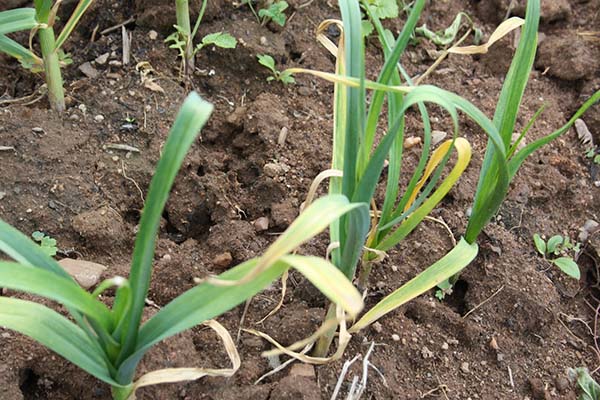
Content
- 1 Why does garlic turn yellow in the garden in spring and summer
- 2 Frost, temperature changes, stress = yellowed (frozen) tips of garlic leaves
- 3 Failure to comply with the terms and rules of planting, agricultural cultivation techniques
- 4 Yellowing of garlic leaves due to lack of nutrition
- 5 Diseases and pests of garlic that cause yellowing of leaves
- 6 Garlic leaves turn yellow in August
Why does garlic turn yellow in the garden in spring and summer
The following factors can cause yellowing of garlic leaves:
- freezing;
- improper fit;
- lack of nutrition;
- diseases and pests.
Next, we will talk about each of the reasons in more detail, and also give advice on how to help garlic, how to feed or process it.
By the way! Most often, the leaves of winter garlic turn yellow, and the yellowing begins precisely from the tips.
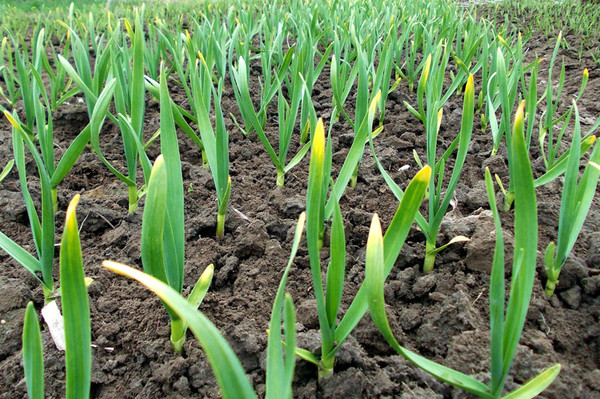
Do I need to pick off the yellowed garlic leaves
Of course, you can prune the yellow leaves, but this is a rather laborious and pointless job. Even if it is a fungal disease, it is quite difficult to remove all the yellow leaves, but you can try. And if the yellowing has occurred due to other reasons, then the yellow leaves do not pose any danger at all. Yes, it may not look very nice, but that's all.
Video: why garlic turns yellow in the garden - what to do and how to process
Frost, temperature changes, stress = yellowed (frozen) tips of garlic leaves
Some gardeners call one of the most common reasons for the yellowing of the tips of garlic leaves in the spring to be short-term recurrent frosts, because of which they seem to "freeze over", living tissues are already dying in them.
However! Many do not agree with this opinion and see the reason, rather, in the fact that the root system is simply difficult to develop at low temperatures, so the plant is inhibited in development, its leaves turn yellow, i.e. it is under stress due to lack of nutrition (it does not come).
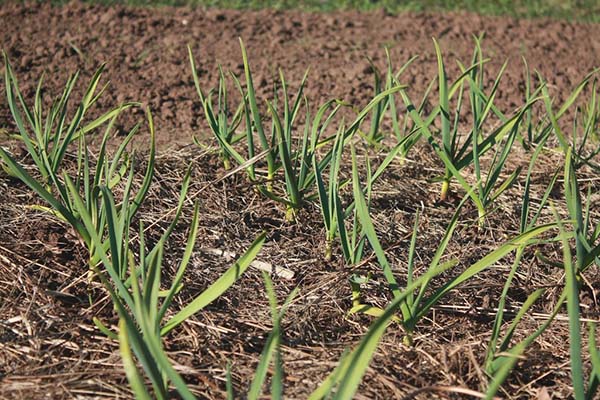
It's another matter if you know that there will be frosts. In this case, one should cover your garlic beds well in advance, and after them to maintain immunity, spray on the leaf one of the growth stimulants, for example, Epin or Zircon solution.
Note! Actually Nothing wrong with that: the garlic itself will grow quite good, because garlic is a fairly winter-hardy and cold-resistant culture.
Video: garlic leaves turn yellow in spring
Failure to comply with the terms and rules of planting, agricultural cultivation techniques
Planting and grooming errors are the most common causes of yellowing of garlic leaves.
Incorrect landing times and rules
Advice! On the site you can see individual articles that how to plant winter in autumn andspring garlic in the spring.
- Firstly, the leaves may suffer even in the fall: if you plant winter garlic too early, it will sprout, and then the young shoots will freeze.
In spring, "frozen" feathers will not be able to develop normally, they will turn yellow and die off.
- Secondly, due to the too shallow planting of the cloves, they are damaged by frost and, again, cannot grow normally.
That is why winter garlic must be planted at a depth of at least 4-6 cm.
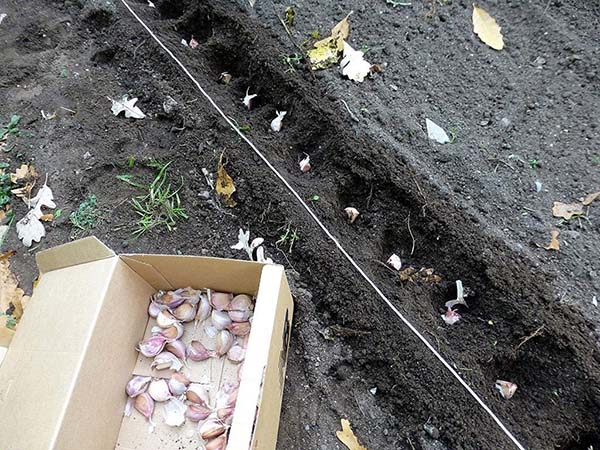
If the garlic is still frozen, its leaves turn yellow, then you can still get a decent harvest if you take proper care of it, feed it on time, water it regularly and do not forget to loosen it (it is better to just mulch).
Acidic soil
Another reason for the yellowing of garlic leaves is planting the cloves in overly acidic soil, which is not at all suitable for successfully growing this crop.
For normal growth and development, garlic requires a soil of neutral acidity (pH 6-7).
Advice! Determine the acidity of the soil on the site you can in one of several ways.
To reduce soil acidity, you need to carry out its liming-deoxidation:
- lime;
- chalk;
- dolomite (limestone) flour;
- wood ash;
- any other deoxidizing agent.
Important! As a rule, it is precisely in the fall, during the digging of the garden and its preparation for the next season.
Clay soil and lack of loosening
The reason for the yellowing of garlic leaves may be a lack of oxygen by the plant, which occurs due to the compaction of the soil (the appearance of dense roots on it). Actually, in this case, air simply ceases to flow to the roots, which the garlic signals about.
This is especially true if you have clay soil.
What to do?
- Loosen the soil after each wateringso that a dense crust does not form on the soil surface, which prevents the roots from breathing normally.
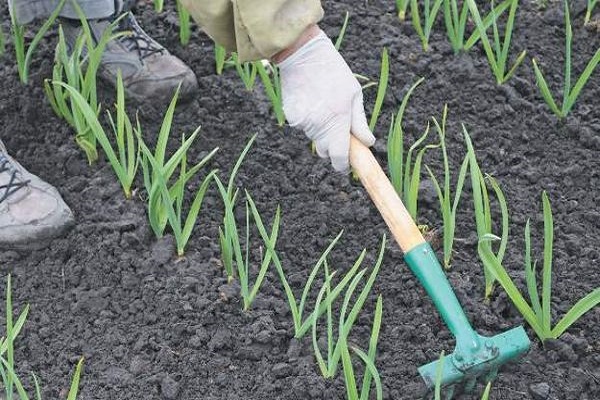
- Better mulch garlic bed. The mulch will prevent crust formation.
Lack of watering
Wrong watering regime, namely lack of moisture can also lead to yellowing of garlic leaves. Therefore, be sure to water the garlic regularly in dry weather to keep the soil moderately moist at all times.
Due to a lack of moisture, nutrients are simply not absorbed by the roots of plants, which is why they do not get into the leaves, which begin to turn yellow.
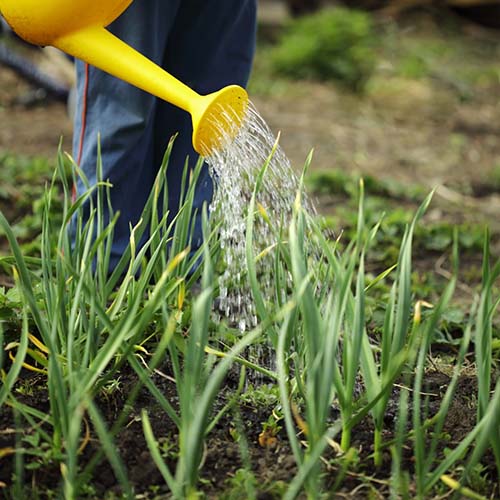
Actually, waterlogging and stagnant moisturedecaying horses will also initially cause the garlic to turn yellow. Therefore, if you have heavy (clay) soil, a lot of snow, frequent rains, it is better to grow garlic in warm (high) beds, or at least plant in the highest parts of the garden.
Yellowing of garlic leaves due to lack of nutrition
If, together with the spring beginning of the regrowth of the leaves, they immediately began to turn yellow, then, perhaps, the reason is the lack of macro- or microelements of nutrition.
Advice! As for the method of fertilizing, you can feed both by the root and by the leaves, i.e. do foliar (leaf) top dressing - spray, while the concentration of the working solution should be reduced by 2 times (after all, we work directly on the green mass).
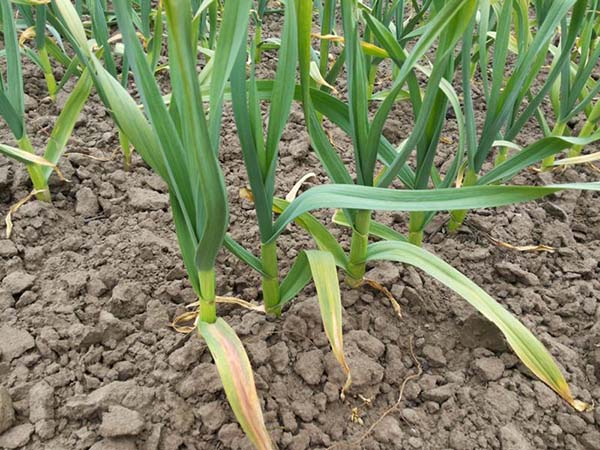
Lack of nitrogen
The fact is that in the bulb itself (clove) a certain amount of nutrients is laid, but they are only enough for rooting and germination. In the future, the plant takes all the necessary nutrition from the soil, respectively, if your soil is poor (especially for sandy soils), the garlic will suffer = turn yellow due to a lack of nitrogen, and most often it is the lower leaves that turn yellow, starting from their tips.
Note! Nitrogen is easily washed out of the soil (by abundant precipitation and as a result of snow melting), therefore, during the autumn preparation of the beds, potash-phosphorus fertilizers are usually applied, and nitrogen fertilizers are applied in early spring.
Thus, immediately after the snow melts, the temperature will rise to +12 .. + 15 degrees and sprouts (leaves) of winter garlic will appear, then it needs to be fed nitrogen fertilizers:
- Mineral: urea / urea (5-10 grams per 10 liters of water) or ammonium nitrate (10-15 grams per 10 liters).
Advice! In cool weather (up to +15) it is better to use ammonium nitrate, and in a warmer one (above +15 .. + 20 degrees) - urea / urea (under such conditions, it dissolves better and is absorbed by the plant).
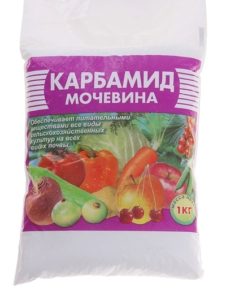
- Organic: green fertilizer (infusion of nettle, dandelion, plantain), cow dung or mullein (if fresh, then about 1 in 15-20, if concentrated, then according to the instructions), bird droppings (fresh 1 in 10-15, if dry, then see instructions).
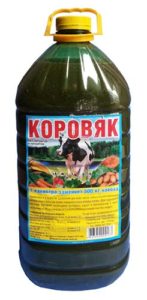
Interesting! Many gardeners from the yellowing of the feathers of garlic recommend nitrogen feeding solution of ammonia (ammonia) - 2-3 tbsp. spoons for 10 liters of water.
However, this method has a lot of opponents, because this remedy is primarily a pharmacy ...
Lack of potassium
Garlic leaves can also turn yellow due to a lack of potassium.
In the case of potassium starvation, in addition to the yellowness of the feathers, there is also uneven growth of leaf plates, namely: they grow too narrow, droop and dry from edge to middle.
In this case, to get rid of the yellowness, you need to feed the garlic with potash fertilizers:
- potassium sulfate or potassium sulfate (15-20 grams per 10 liters of water);
Sometimes potassium sulfate also contains some magnesium.
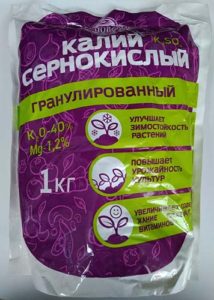
- potassium magnesium (potassium + magnesium);
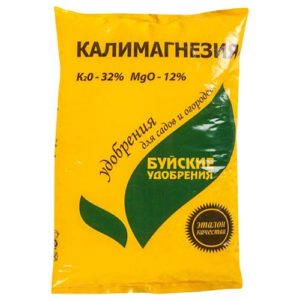
- wood ash (100-200 grams per 10 liters).
By the way! The site has a separate article about how is wood ash useful for plants, when and how to use it in horticulture.
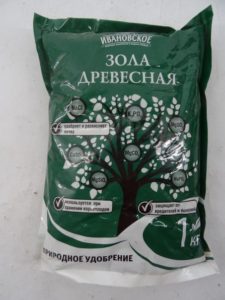
Lack of magnesium
Another possible reason for yellowing of garlic leaves is a lack of magnesium. So, with a lack of this trace element, first of all lower (older) leaves turn yellow.
What magnesium fertilizers exist:
- Magnesium sulfate (15 grams per 10 liters of water).
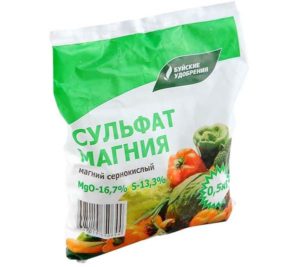
- Wood ash (for the most part potash fertilizer, which contains many other trace elements, including magnesium; recipe for feeding solution - 100-200 grams per 10 liters of water);

- Kalimagnesia (potassium + magnesium, 15-20 grams per 10 liters of water).

Diseases and pests of garlic that cause yellowing of leaves
Another common cause of yellowing of garlic leaves is the defeat of the plant by one of the diseases and the attack of pests, while in the first place the bulb is damaged, in other words, this cause of yellowing is a real danger for your future harvest. However, it is impossible to simply determine the presence of a disease by the color of the leaves; it is necessary to dig up and examine the bulb itself.
It is worth understanding! Diseases and pests primarily stick to weak plants, so do not skimp on fertilizers with mineral and / or organic fertilizers.
Fusarium, peronosporosis and other diseases
This dangerous disease first leads to yellowing of garlic leaves, on which a pinkish bloom of spores then appears. Further, the spores infect the bulb from the bottom and cause the death of the roots. Affected bulbs during storage, after a month, become covered with white or pinkish mycelium (fungi) and rot.
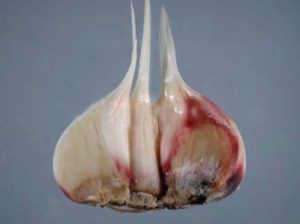
Garlic is most affected by fusarium when it is planted after potatoes, in other words, you always need observe crop rotation.
Also garlic can be affected peronosporosis (downy mildew), bacteriosis, white and basal rot, black mold, mosaic, rust and other dangerous diseases.
By the way! Peronosporosis (downy mildew) is a fungal disease, which means it can be treated. So, to treat garlic from this disease (yellow spots appear on the leaves, and white spores of the fungus appear on the lower side), you can spray the plants Fitosporin, Trichodermin (all biological preparations), or Quadris (chemical fungicide), and it is better to do this for preventive purposes, i.e. even before the appearance of yellowness in the form of spots.
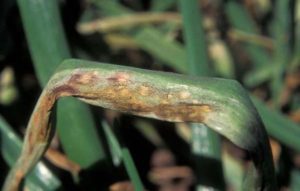
Onion stem nematode
Another reason for yellowing of the leaves can be damage to the garlic by the stem nematode. In this case, the leaves of garlic not only turn yellow, but also subsequently die offand the affected garlic bulbs become loose and unfit for human consumption and reproduction (future planting).
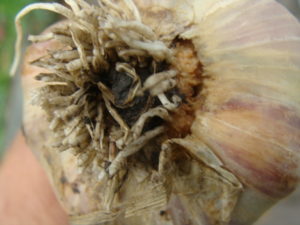
What to do in this case?
- Use only healthy planting material.
- Observe the rules of crop rotation and crop rotation.
Advice! The site already has detailed material about after which it is better to plant winter garlic.
- To cleanse the soil from nematodes, you can plant it on an infected site. marigold or other strong-smelling plants that help repel pests, the same calendula.
By the way! Signs of nematode damage to garlic are often confused with harmful activity onion fly.
Onion fly
Important! The site already has a separate article about how to deal with an onion fly in the garden.
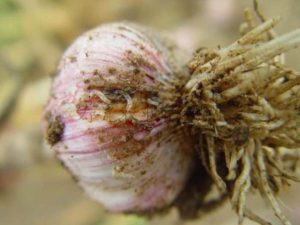
Garlic leaves turn yellow in August
Well, if you have exactly this situation, then congratulations, because this is a signal that harvest time is approaching!
Important! About, how to tell when to dig up and harvest garlic, detailed in this material.
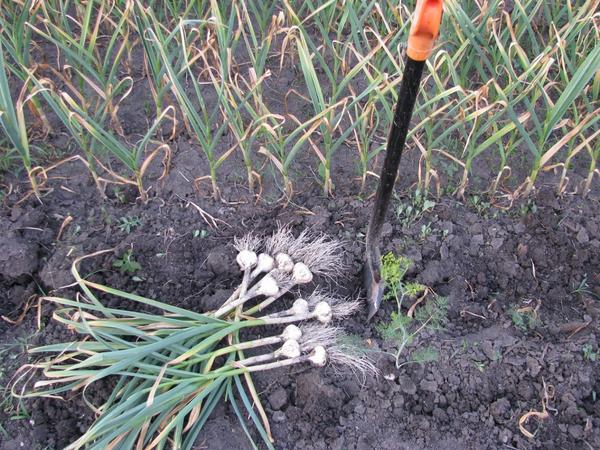
Now you know the main reasons why the leaves of garlic turn yellow, which means that you just have to determine what caused the yellowing of the leaves in your garlic bed and take appropriate measures, or correct planting and maintenance errors next year.
Video: why garlic leaves turn yellow

